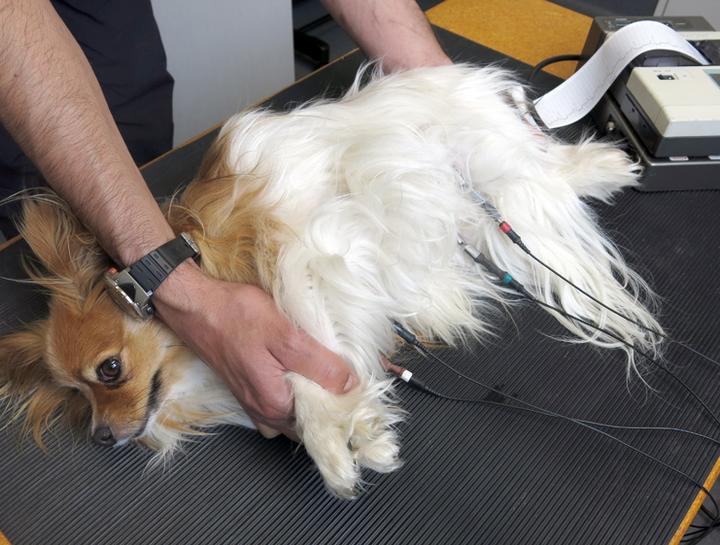Electrocardiography
A critical tool in the diagnosis and management of cardiac issues.
When we speak of an ECG or EKG, we are referring to an electrocardiogram. This diagnostic test will be used for monitoring your pet's heart and diagnosing any potential concerns. Little sensors attached to the skin monitor electrical activity to give a representation of what the heart is doing.
By analyzing the electrical impulses passing through the heart, abnormalities within the heart can be found. These abnormalities may include issues such as arrhythmias (irregular heartbeats), abnormalities in the size and structure of the various heart chambers, abnormal conduction, and other defects of the heart.
Your pet will be required to remain still for this test, either standing or laying down on an examination table. The ECG electrodes are applied to your pet's skin, at the base of each of his four legs. Rubbing alcohol or a special conduction gel may also be applied to help the electrical impulses travel more easily from your pet's body into the ECG electrodes.
Once the electrodes are applied, your dog will be kept still for a brief period of time, in order to allow the ECG to record the electrical impulses passing through the heart. Your dog's electrical conduction may be traced for less than a minute or for several minutes, depending on what abnormality your veterinarian suspects and how effectively your dog is able to remain still for a high-quality ECG recording.
After the test is run, it may be interpreted in-house by your veterinarian or it may be sent out to a veterinary cardiologist for interpretation.

